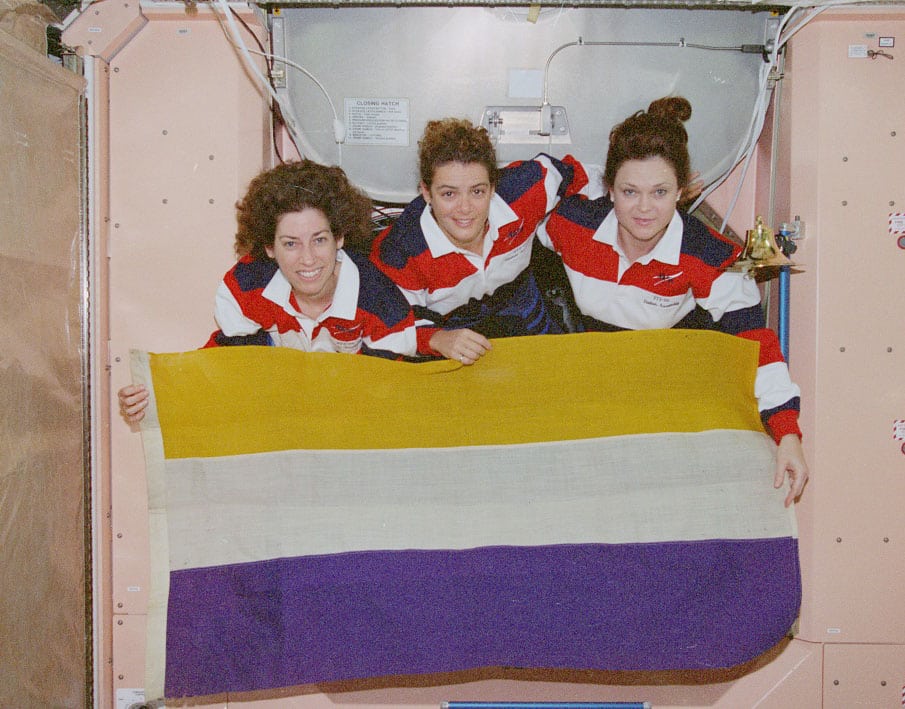*Editor’s Note: The “Views from NAU” blog series highlights the thoughts of different people affiliated with NAU, including faculty members sharing opinions or research in their areas of expertise. The views expressed reflect the authors’ own personal perspectives.
By Frances Julia Riemer, Ari Burford, Dilo Miskinzod, and Juan Ochoa, faculty in Women’s and Gender Studies
Dr. Frances Julia Riemer is the WGS interim director and a professor of educational leadership who studies gender, development and sustainable communities throughout the world. Dr. Ari Burford is a teaching professor who has studied and written on a number of topics related to women and feminism nationally and internationally. Dr. Dilo Miskinzod is an assistant teaching professor and medical doctor who studies transnational feminisms, reproductive health and migration. Dr. Juan Ochoa is an assistant professor whose work sits at the intersection of Mexican American and Chicana/o and women’s studies.
We celebrate two women-focused commemorations this month, International Women’s Day on March 8, and Women’s History Month all month. Combined, both the day and month celebrations reflect more than 150 years of women’s activism addressing power inequities, dating back to at least the first women’s rights convention in the U.S. in Seneca Falls, New York, in 1848. Women’s calls for equal rights built a foundation for an international movement. In 1909, the first celebration of International Women’s Day was organized by the Socialist Party of America in New York City to commemorate 15,000 women who protested against poor working conditions in New York. The holiday was supported in large part by leftist movements and governments until its adoption by the global feminist movement in the late 1960s and by the United Nations in 1977. International Women’s Day is now celebrated in more than 100 countries. Centered in the U.S., the commemoration of Women’s History Month followed in 1978, first as Women’s History Day in Sonoma County, California, and then expanding to a national week (1980) and then month (1987) in the United States.
Throughout this history, women throughout the world have and continue to organize for suffrage and labor rights. They come together in peace movements and against land development and dispossession. In the U.S., movements spearheaded by Harriet Jacobs and Sojourner Truth protested slavery and by Sarah Winnemucca countered colonialism, forced removal and land theft in the late 19th century. In the last 60 years, women have worked to liberalize divorce laws and craft legislation prohibiting employers from firing pregnant women. Women’s studies programs were created, and later, they supported ethnic studies programs and informed and housed LGBTQ studies. Dolores Huerta and others opposed the gendered, racialized exploitation of farm workers, and Cherrie Moraga joined Chicana lesbians in naming white supremacist heteropatriarchal United States. Women pushed for equal pay for equal work and an end to domestic violence and sexual harassment. In 1972, the U.S. Congress passed Title IX of the Higher Education Act, prohibiting discrimination on the basis of sex in any educational program receiving federal funds, and in 1973, the U.S. Supreme Court legalized abortion. International Women’s Day and Women’s History Month celebrate women who catalyzed these radical changes that are now encoded in policies and practice.
Of late, women in the Global South have made real progress around reproductive justice, while we in the U.S. find ourselves backsliding with the recent Dobbs decision and the move from federal to state oversight of abortion. But while we might feel deflated and defeated, it’s important to remind ourselves that women’s rights campaigns also percolate below the surface. Feminist consciousness-raising, a form of activism popularized by U.S. feminists in the late 1960s and 1970s, continues to provide space for raising awareness of the relationships between lived experiences and broader social issues. In WGS classrooms, conversations spark ideas and can ultimately lead to positive change on campus and in the community.
#EmbraceEquity, the focus of International Women’s Day this year, reminds us that gender equity must be part of the foundation of every society. As we at NAU move forward with our Diversity Strategic Plan and welcome our new vice president of inclusion, diversity and equity to campus, we come together to celebrate Women’s History month and contemplate what it means to embrace gender equity. On a campus with a gender distribution of 63 percent women, we look forward to the opening of the long-awaited Early Learning and Development Center and note the carving out of lactation spaces around campus. These projects make campus more inclusive for all students, faculty, staff and administrators. We applaud NAU students’ energetic support of the Flagstaff City Council’s resolution to uphold bodily autonomy and reproductive rights, and we draw on the strength, ingenuity and indefatigability of all who promote gender equity as we continue to work for positive change.
Top photo: STS-96 mission specialists Ellen Ochoa, Julie Payette and Tamara Jernigan float together in the Node 1/Unity module with the gold, white and purple suffrage banner from the National Woman’s Party. This actual banner was used early in the century (around 1916-1920) as women fought for the right to vote. Ochoa used it in the public service announcement that she did from space discussing the Presidential Commission on the Celebration of Women in American History (of which she is a member) and NASA’s contribution to the report the commission wrote and presented to the president. Courtesy: National Archives.



